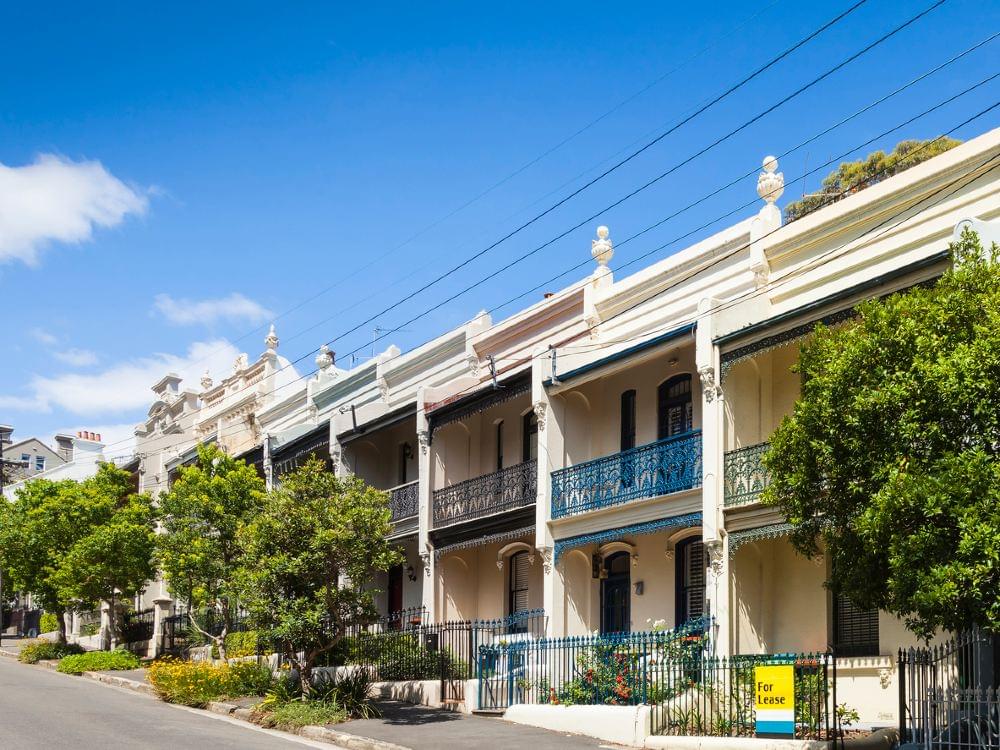Australian property market update - March 2020
In the past month, the nation has seen some of the biggest changes that we've had in quite some time. Though an economic downturn doesn’t always correlate to a property market downturn, the Australian property market isn’t entirely immune to these major shifts and new regulations.
As part of the Government's restrictions in response to Coronavirus, in-person real estate auctions and public open homes have been banned, which is having an impact on how buyers and sellers transact. With that being said, the real estate industry has quickly adapted to these changes, with the introduction of new processes such as online property auctions, and virtual and 3D property inspections.
According to recent CoreLogic datasets on how COVID-19 has affected the property market, ~400 surveyed real estate agents reported a decline in both buyer and seller enquiries.
Fortunately, there is somewhat of a bright side. If you need to sell for any other reason, real estate agents are making this possible through a heavier reliance on technology, with many still getting great results.
Homeowners who were needing to sell due to possibly defaulting, can now defer home loan repayments if they’ve been affected by the coronavirus.
The government is also providing financial assistance to support individuals, households and businesses through the crisis.
National property values: March 2020

Houses
$566,476
Monthly change: +0.7%
Units
$522,182
Monthly change: +0.6%
Overall, dwelling values have gone up by +0.7% for the month, +2.7% for the quarter, and +7.5% for the year. However, CoreLogic reports that the second half of March saw a weakening in the growth trend, likely as a result of the social distancing policies and a decline in consumer confidence.
The top performing capital cities for the month were Darwin (+2.0%), Sydney (+1.1%), Brisbane (+0.6%), and Canberra (+0.6%). Over the past quarter, the best performing capital cities were Sydney (+3.9%), Melbourne (+2.9%) and Canberra (+1.7%).
"The longer it takes to contain the virus and bring economic operations back to normal, the higher the downside risk to housing values."
Every capital city sub-region saw a rise in housing values over the March quarter, including the Perth sub-regions that previously had a long-running downturn. Sydney and Melbourne sub-regions are leading the way for annual change in dwelling values.
With the coronavirus crisis, CoreLogic’s Tim Lawless expects some kind of fall in housing values, “Arguably, the longer it takes to contain the virus and bring economic operations back to normal, the higher the downside risk to housing values.”
Sydney and regional NSW
Houses
$1,020,849
Monthly change: +1.1%
Units
$770,469
Monthly change: +1.1%
Overall dwelling values in Sydney are up +1.1% for the month and +3.9% for the quarter, the highest quarterly growth compared to other capital cities. In the past 12 months, there has been +13.0% growth in Sydney, again the highest compared to other capital cities.
Of the top ten capital city sub-regions with the highest annual change in dwelling values, seven are in Sydney. Ryde is up +19.8%, the Inner West up 18.1%, Baulkham Hills and Hawkesbury up +17.3%, the Northern Beaches up +14.6%, City and Inner South up +14.4%, North Sydney and Hornsby up +14.2%, and the Inner South West up +13.2%.
For the top performing regional sub-regions in NSW, Illawarra has had a +5.7% annual change in dwelling values. Following closely behind, the Newcastle and Lake Macquarie region has had +5.1% growth.
Melbourne and regional VIC
Houses
$819,611
Monthly change: +0.4%
Units
$589,042
Monthly change: +0.4%
Dwelling values in Melbourne are up +0.4% over the last month, +2.9% over the quarter and +12.0% over the year. Melbourne has had the second highest growth in the past quarter and past year compared to the other capital cities.
Out of the top ten capital city sub regions that have had the highest annual change in dwelling values, three are in Melbourne. This includes the Inner East with the highest growth of +19.8%, the Inner South with a growth of +14.6%, and Inner Melbourne with a growth of 13.3%. However, the Inner East and Inner South saw decreases in March.
Brisbane and regional QLD
Houses
$557,714
Monthly change: +0.7%
Units
$386,427
Monthly change: +0.1%
Brisbane reports positive growth with a +0.6% increase for the month, +1.6% increase for the quarter, and +3.1% annual growth. The increase for March is made up of a +0.7% growth in house values and +0.1% increase in unit values.
Though there are no capital city sub-regions within the top ten with the highest annual change in dwelling values, many non capital city regions are performing well. For example, the Mackay-Whitsunday region has had an annual growth of +6.3%, Sunshine Coast of +5.1%, and Gold Coast of +4.8%.
However, drought-stricken Outback Queensland is down -14.6% over the past year. Furthermore, the Brisbane sub-regions of Ipswich and Logan/Beaudesert are down over the past month.
Hobart and regional TAS
Houses
$513,325
Monthly change: +0.6%
Units
$397,409
Monthly change: -3.3%
Hobart was the only capital city in March to have a decrease in dwelling values. Over the past month, there was a decline of -0.2%. Though over the past quarter, there has been a +1.4% increase, dwelling values are still down -5.4% over the past year.
Some of the best performing non capital sub-regions are however located in Tasmania. There has been an annual change in dwelling values of +10.3% in Launceston and the North East, +8.4% in the West and North West, and +6.4% in the South East.
Read more: Best suburbs to invest in Hobart 2020
Canberra and the ACT
Houses
$702,173
Monthly change: +0.7%
Units
$443,468
Monthly change: +0.1%
Dwelling values in Canberra have gone up by +0.6% last month, +1.7% last quarter and +8.9% over the past year. Canberra has had the third highest growth over the past quarter when comparing capital cities, following behind Sydney and Melbourne.
Read more: Best suburbs to invest in Canberra 2020
Adelaide and regional SA
Houses
$474,425
Monthly change: +0.2%
Units
$330,192
Monthly change: +0.7%
In Adelaide, dwelling values went up by +0.3% in March, +0.6% over the quarter and +0.9% YTD. This makes Adelaide the weakest performing capital city, along with Darwin, for the quarter. However, annual change is still positive whereas Darwin and Perth have had negative growth.
West Adelaide, Central and Hills, as well as the Barossa - Yorke - Mid North region have had declining annual change in dwelling values.
Read more: Best suburbs to invest in Adelaide 2020
Perth and regional WA
Houses
$461,845
Monthly change: +0.6%
Units
$356,868
Monthly change: -0.3%
Housing values in Perth have continued trending upwards after recently turning positive. All of Perth’s sub-regions recorded a rise over the March quarter. Overall, dwelling values in Perth were up +0.5% in March, and 0.9% over the quarter, but down -3.1% for the past year.
WA’s Wheat Belt and Outback South recorded falls in dwelling values over the March quarter. These agricultural regions, along with the Bunbury region, have all had decreasing annual change.
Read more: Best suburbs to invest in Perth 2020
Darwin and regional NT
Houses
$473,479
Monthly change: +1.9%
Units
$273,202
Monthly change: +2.2%
After the negative growth in February, Darwin had a +2.0% increase in dwelling values over March. This was the best performing capital city for last month. However, Darwin, along with Adelaide, is still the weakest performing capital city for the quarter with only a +0.6% change, and dwelling values are down -5.4% over the year.
Read more: Best suburbs to invest in Darwin 2020
Rents and rental yields
According to CoreLogic, rental rates have only risen by +1.4% in the past 12 months, lower than the rate of inflation. Of the capital cities, Hobart has had the largest annual change in rents with an increase of +3.4%. Darwin was the only capital city to have a decrease, -1.2% annual change.
In March, the Australian government announced a 6-month moratorium on evictions.
In terms of gross rental yields, Sydney reached a record low of 2.96% in March. The capital city with the highest rental yield was Darwin, 5.9%. The national gross rental yield sat at 3.8%.
In March, the Australian government announced a 6-month moratorium on evictions, meaning landlords will be banned from evicting tenants who can’t make their rent due to the coronavirus. It’s important for both tenants and landlords to have open communication during this period.
Property Update's Michael Yardney recommends landlords to set up a payment plan for tenants who are suffering with coronavirus-related financial difficulties. This could involve paying less rent for the time being but having to catch up down the line.
What does this mean, and what to expect in the months ahead?
If you’re still looking to sell your home during the coronavirus crisis, you still can, just with a slightly different process. However, with things changing everyday, it's recommended that you speak to a local agent before making the plunge.
“The housing market won’t be immune to a drop in sentiment and weaker economy, however the extent of the impact on dwelling values remains highly uncertain.”
According to CoreLogic’s head of research, Tim Lawless, the future of Australia’s property market is unclear, “The housing market won’t be immune to a drop in sentiment and weaker economy, however the extent of the impact on dwelling values remains highly uncertain.”
“Capital growth trends will be contingent on how long it takes to contain the virus, and whether additional constraints on business or personal activity are introduced.”
Although the economic effects from Coronvirus are not yet clear, fortunately, it does look like Australia’s social distancing measures have had a positive effect. The number of new cases of coronavirus has been declining for a few days. Unfortunately though, community transmission has still been on the rise and we’ll have to continue being diligent for at least a while longer.







